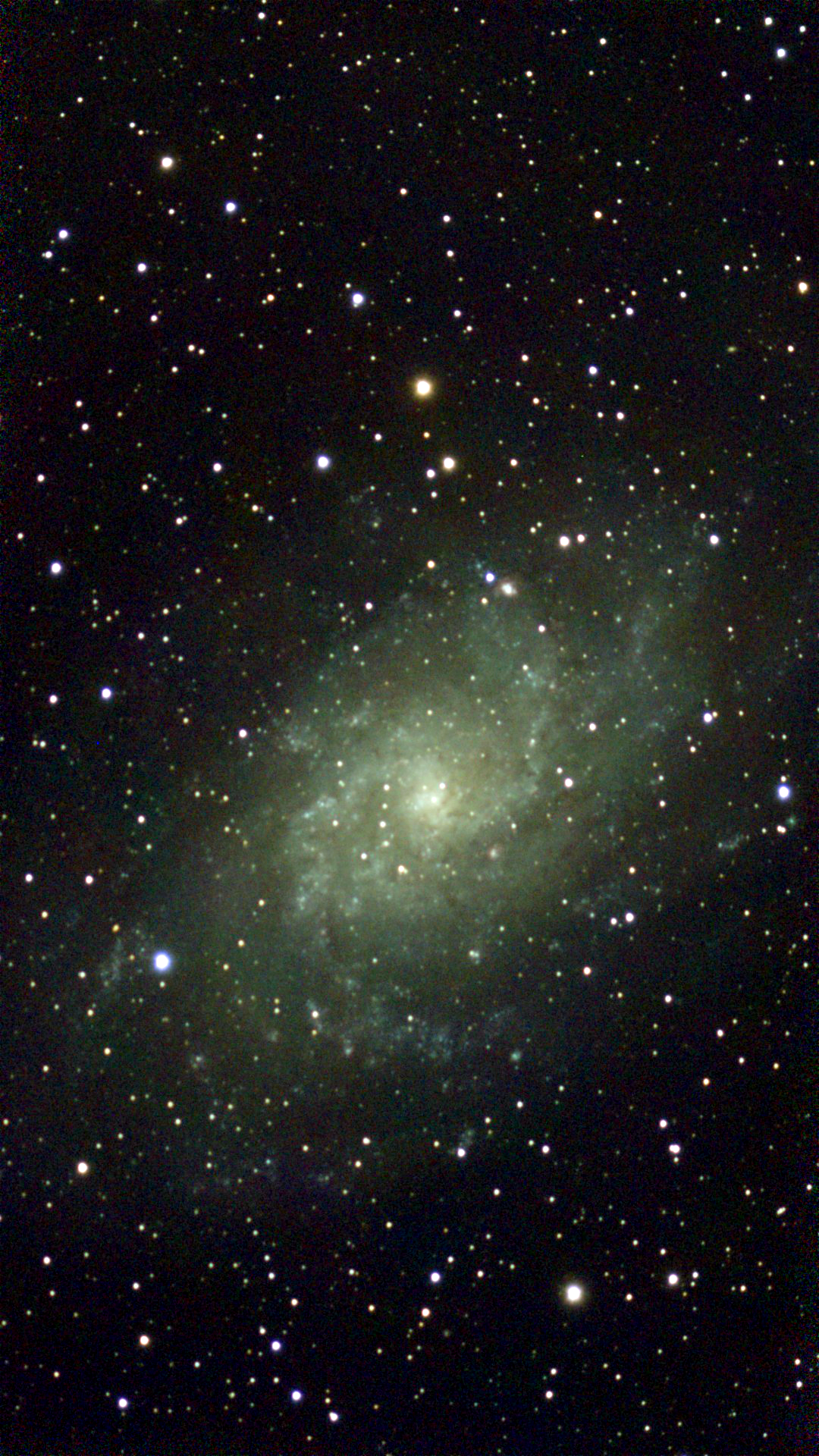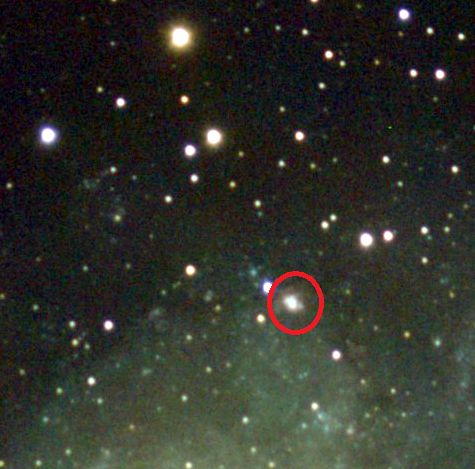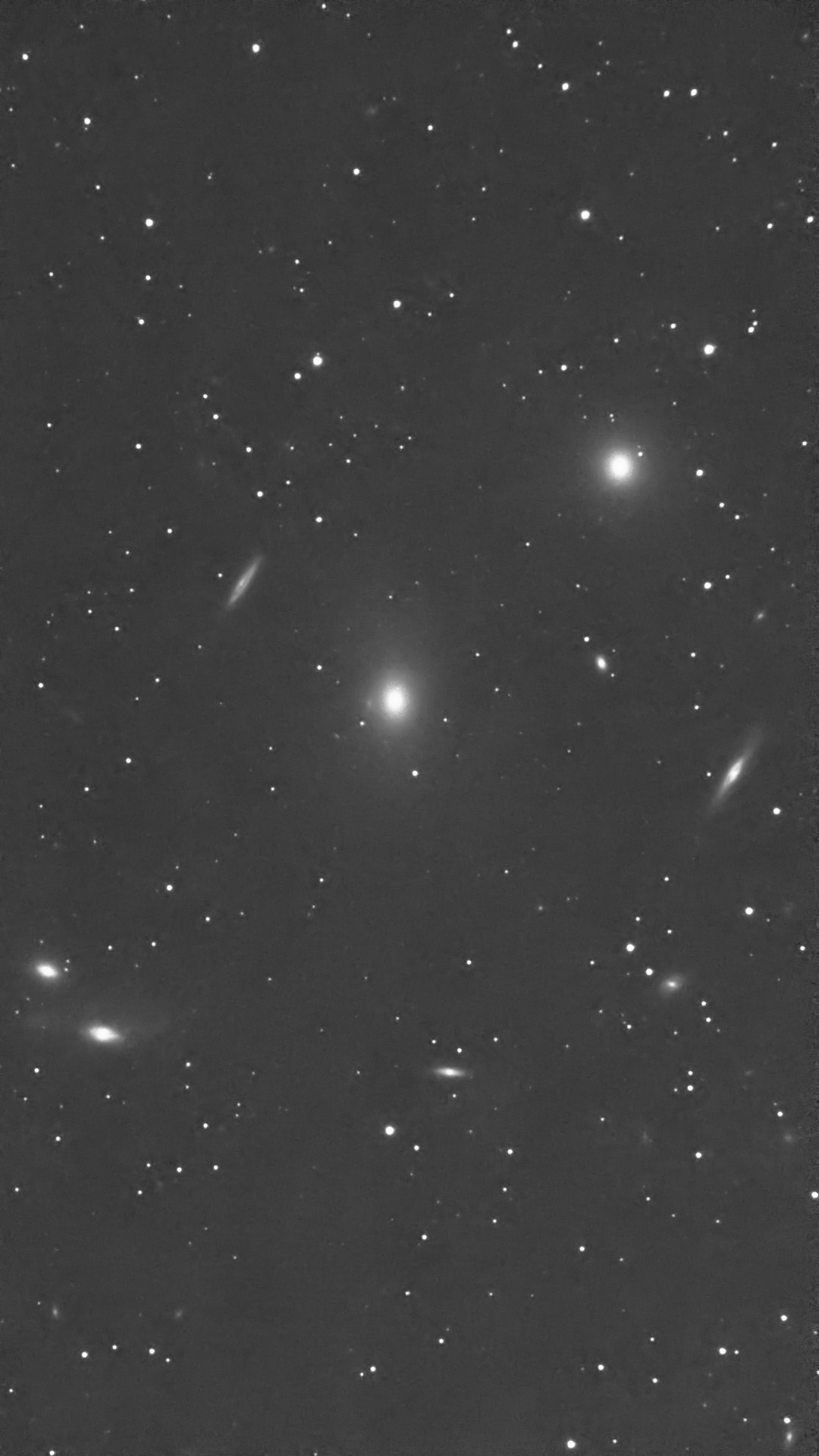𝐀𝐧𝐧𝐢𝐦𝐞 𝐖𝐨𝐧𝐠 on Nostr: Name: M33 - The Triangulum Nebula Constellation: The Triangulum Ahhhh! I had meant to ...
Name: M33 - The Triangulum Nebula
Constellation: The Triangulum
Ahhhh! I had meant to try and post an image of one object a week, but the last week and a half has been cloudy. Very annoying. But finally, I've got clear skies!
Anyway...
The Triangulum Nebula is one of the big three "neat" objects exclusive to the Northern Hemisphere. Unfortunately, the Southern Hemisphere has, like, a dozen, so I don't imagine they're too disappointed. Straya bros stay winning.
M33 has the honor of being the furthest thing you can see with the naked eye. Actually, it's in a bit of a tie with one other object (which I'll get to later). Really it depends on how dark it is where you're at. If it's advanced darkness (Bortle 3 or lower) You can easily see M33, meaning you're looking at something over 3 million light years away. It's quite obvious too, as it looks to be around the size as the full moon.
We don't really know who "discovered" M33, since it is visible to the naked eye. The problem is, no one seemed to write it down. The first record we have of it comes from an Italian guy in the mid 1600's, and the first official account was made by Charles Messier in the mid 1700's. William Herschel did a more in-depth study of the object, and found a region now called NGC 604, a massive star forming region and the largest and brightest known nebula in the Local Group. I circled the nebula in red. Were it in our galaxy, it would be brighter than the full moon. It makes me wonder what life on planets near it would be like. What would their views of the night sky be like?
Anyway, you may notice that I called NGC 604 a nebula, when I also called M33 the "Triangulum Nebula". That's because the discovery of M33 predated the discovery that it was actually a Galaxy. While it is now commonly called "The Triangulum Galaxy", the old name "Triangulum Nebula" is a carry over that many still insist on for historical sake.
A surprising fact about galaxies is that they are a fairly recent discovery. Actually, the "proof" that these objects are galaxies has been known for less than 100 years (actually it will be exactly 100 years this November). Edwin Hubble used data from this galaxy as part of his paper which finally put the debate to rest, though there were rumblings before that. The first to propose that this might be the case was Immanuel Kant in the 1700's, but it was largely ignored by most astronomers at the time, though the existence of nebula within nebula, like NGC 604, were good circumstantial evidence that these objects were far larger than anything else we'd seen up to that point.
In about 2 billion years, this galaxy might crash into the Milky-way. Might, because we don't know. We do know for a fact that the Milky-way will crash into another, much larger, galaxy, but M33 is a bit of a mystery. M33 might crash into us first, or it might miss us, or it might even become a moon to our galaxy.
I'll up date this when it happens, to let you know how it all plays out.


Constellation: The Triangulum
Ahhhh! I had meant to try and post an image of one object a week, but the last week and a half has been cloudy. Very annoying. But finally, I've got clear skies!
Anyway...
The Triangulum Nebula is one of the big three "neat" objects exclusive to the Northern Hemisphere. Unfortunately, the Southern Hemisphere has, like, a dozen, so I don't imagine they're too disappointed. Straya bros stay winning.
M33 has the honor of being the furthest thing you can see with the naked eye. Actually, it's in a bit of a tie with one other object (which I'll get to later). Really it depends on how dark it is where you're at. If it's advanced darkness (Bortle 3 or lower) You can easily see M33, meaning you're looking at something over 3 million light years away. It's quite obvious too, as it looks to be around the size as the full moon.
We don't really know who "discovered" M33, since it is visible to the naked eye. The problem is, no one seemed to write it down. The first record we have of it comes from an Italian guy in the mid 1600's, and the first official account was made by Charles Messier in the mid 1700's. William Herschel did a more in-depth study of the object, and found a region now called NGC 604, a massive star forming region and the largest and brightest known nebula in the Local Group. I circled the nebula in red. Were it in our galaxy, it would be brighter than the full moon. It makes me wonder what life on planets near it would be like. What would their views of the night sky be like?
Anyway, you may notice that I called NGC 604 a nebula, when I also called M33 the "Triangulum Nebula". That's because the discovery of M33 predated the discovery that it was actually a Galaxy. While it is now commonly called "The Triangulum Galaxy", the old name "Triangulum Nebula" is a carry over that many still insist on for historical sake.
A surprising fact about galaxies is that they are a fairly recent discovery. Actually, the "proof" that these objects are galaxies has been known for less than 100 years (actually it will be exactly 100 years this November). Edwin Hubble used data from this galaxy as part of his paper which finally put the debate to rest, though there were rumblings before that. The first to propose that this might be the case was Immanuel Kant in the 1700's, but it was largely ignored by most astronomers at the time, though the existence of nebula within nebula, like NGC 604, were good circumstantial evidence that these objects were far larger than anything else we'd seen up to that point.
In about 2 billion years, this galaxy might crash into the Milky-way. Might, because we don't know. We do know for a fact that the Milky-way will crash into another, much larger, galaxy, but M33 is a bit of a mystery. M33 might crash into us first, or it might miss us, or it might even become a moon to our galaxy.
I'll up date this when it happens, to let you know how it all plays out.
quoting note1j5f…dn7rI haven't felt too great over the last couple of days, and I had hopped to process this image more. Oh well...
This is a snapshot of the Virgo Supercluster, nearly every fuzzy patch you see is a galaxy, and this is only a small part of it. The entire complex is enormous. Of note is that most of these galaxies are either of the elliptical or starburst variety, suggestive of the very complex interactions between the several thousand galaxy in the region. Very few pretty grand design spirals like the Milky Way.
This part of the cluster is called the Markarian's Chain... I don't really know why. Individually, many of these galaxies are famous in there own right.
The brightest one in the center is called Messier 86, discovered by Charles Messier, and many others in this image were discovered by William Herschel. Both these names are incredibly important in astronomy, and pop up as frequently as Barnard, if not more so.
Charles Messier was a comet hunter. Unfortunately for him, many deep space objects (objects outside the solar system, like star clusters, galaxies, and nebula) look just like comets through a telescope (our night vision is trash, and so everything looks like pale blue fuzzies... like a comet).
To help himself and others, he created a list of objects that were not comets. His list of a over a hundred objects is basically the field guide for beginner astronomers, fun things to look for in a small personal telescope.
William Herschel was a German composer who immigrated to Europe, also a comet hunter, and of his many achievements, is famous for being the first person to discover another planet, which he named Georgium Sidus. Unfortunately today, it has a more silly name.
There use to be a youtube video of one of William Herschel's songs, over witch someone put a bunch of holocaust denial stuff. I don't know why.
note18vs…cx5f



